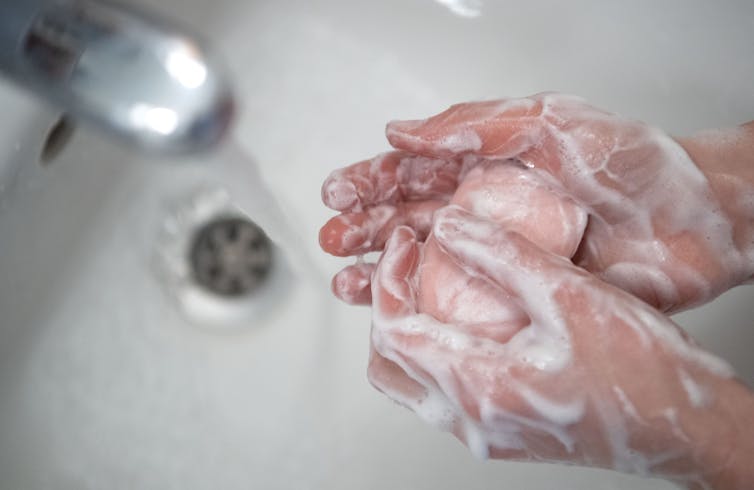How to make sure your mask maximizes protection, according to a nurse (Hint: Start by wearing over b
Masks are only effective if you follow certain principles when wearing them.

Whether or not you agree with a mandate to wear a mask, many of us will do so during our daily business.
I am a professor of nursing at Purdue University, where a colleague and I teach a class detailing the history of health care over the centuries. Among other things, students discover the original reason for a cloth mask, dating back to the late 19th century, is the same as today: to protect others from the germs of those wearing them. Understanding these past practices, say the students, makes them better caregivers.
With that in mind, here are five ways for you to make the most of wearing a mask in public.

1. Not all masks are created equal
Cloth masks are considered appropriate for general use in public. The Mayo Clinic recommends a mask that is two-layered. This means the cute reversible one your neighbor sewed for you is approved. Not recommended: a mask with a valve. Although the wearer breathes in filtered air, the unfiltered air is pushed out upon exhalation. This negates the protection for others.
2. Wash, wash, wash your hands
Before putting your mask on, wash your hands. This is a basic infection control principle. Anytime you come in contact with your face, do it with clean hands. This includes rubbing your eyes, wiping your lips, or scratching your nose. Likewise, after removing your mask, wash your hands again.
Don’t mess with the mask while it’s in place. This is not the time to take a sip of your latte or snack on your beef jerky. Eat and drink in an environment where you can socially distance from others by at least six feet. If you have to adjust your mask when it’s on, clean your hands afterwards. For convenience, carry a hand sanitizer with you.
[Get our best science, health and technology stories. Sign up for The Conversation’s science newsletter.]
3. Does this mask make me look smart?
The mask should fit comfortably snug, always covering your nose and mouth, and secure under the chin. Covering only the mouth is useless. Humans breathe in and out of both nose and mouth. And the purpose of the mask is to block germ transmission through the air, which can occur when one exhales (spreads germs) or inhales (takes in germs) through either nose or mouth.
4. When you’re done
When it’s time to take it off, clean your hands and grab the ties or ear loops to pull the mask away from your face. Fold the mask in on itself so the outside corners are together. Do not put the mask on your forehead like a headband, or around your neck like a scarf. Place the mask in a receptacle to be laundered. And then wash your hands.
5. Clean it up
Wash the mask with other laundry using your regular detergent. If you’re using a washing machine, use the warmest possible water that’s safe for the type of cloth used to make the mask.
For drying, it’s the same: Use the highest temperature possible for the fabric. Then allow to dry completely before wearing again.
If hand-washing the mask, use a disinfecting bleach. Follow the directions on the product to create the appropriate dilution, then soak the mask five minutes. Rinse with cool water and lay flat to dry or hang in direct sunlight. Be careful not to stretch the fabric; that could damage the mask.
As a former operating room nurse, I know that masks are uncomfortable. Unless it’s Halloween, they’re no fun to wear. But we’re not trying to have fun. We’re trying to keep ourselves, our families and our communities safe. So Google search for the perfect mask to showcase your personality, and wear it correctly with pride!
Joy Pieper does not work for, consult, own shares in or receive funding from any company or organisation that would benefit from this article, and has disclosed no relevant affiliations beyond their academic appointment.
Read These Next
AI’s errors may be impossible to eliminate – what that means for its use in health care
Many health symptoms can be caused by multiple illnesses – if AI can’t tell the difference between…
AI-generated political videos are more about memes and money than persuading and deceiving
Don’t discount the threat of AI political videos fooling people, but for now, they’re mostly about…
The Ivies can weather the Trump administration’s research cuts – it’s the nation’s public universiti
While headlines focus on Harvard and Columbia, state universities train far more STEM students, power…




